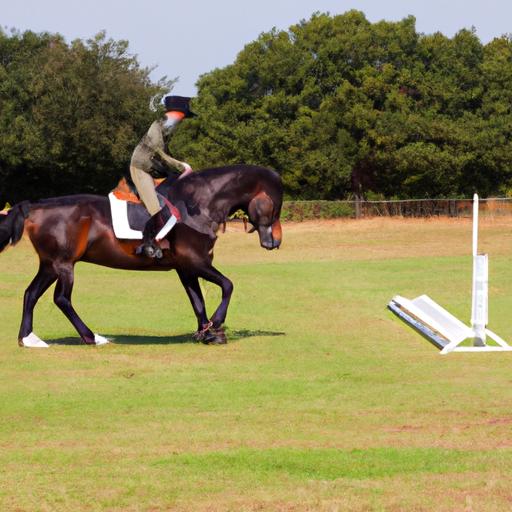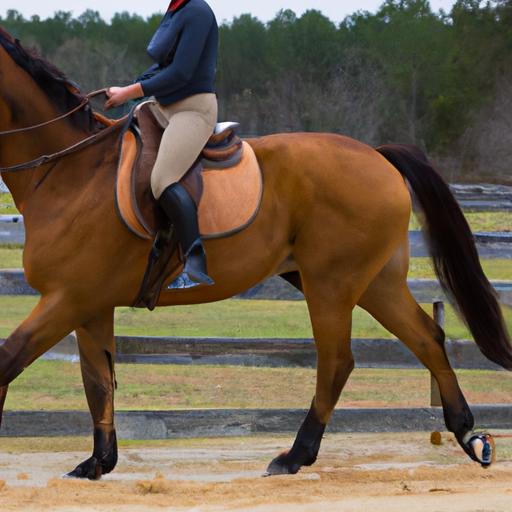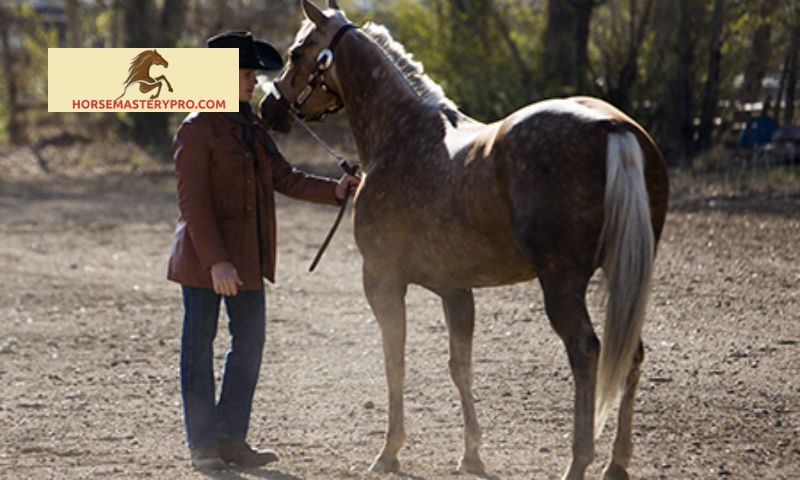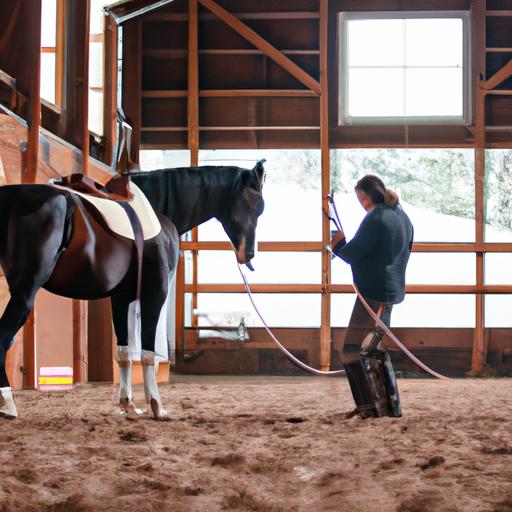Unlock the path to equine excellence with academic horse training. Discover the principles, benefits, and techniques to build a harmonious partnership.
Introduction to Academic Horse Training

Have you ever wondered how horses and riders achieve true harmony and grace? Welcome to the world of academic horse training, where the bond between horse and rider transcends mere obedience and enters a realm of mutual understanding and respect. In this article, we will delve into the captivating realm of academic horse training, exploring its definition, and uncovering the plethora of benefits it holds for both equines and equestrians.
Defining Academic Horse Training
Academic horse training is an approach that goes beyond traditional methods, focusing on the horse’s natural behavior and psychology. It aims to develop a deep connection, trust, and communication between horse and rider, resulting in a harmonious partnership. Rather than relying solely on force or dominance, academic horse training employs a compassionate and empathetic approach to foster mutual understanding and cooperation.
The Importance and Benefits
Academic horse training offers a myriad of benefits for horses and riders alike. For horses, it allows them to develop physical strength, balance, and flexibility while maintaining their mental well-being. By understanding their natural instincts and behaviors, academic horse training empowers horses to express themselves freely, resulting in enhanced athleticism and confidence.
For riders, academic horse training provides a transformative journey of self-discovery and growth. It enhances the rider’s ability to communicate effectively with their equine partner, improving their horsemanship skills and overall riding performance. As riders develop a deeper understanding of their horse’s needs and responses, they become more adept at refining their aids, creating a seamless and effortless connection.
As we embark on this exploration of academic horse training, prepare to unlock the secrets of equine excellence. Let’s delve into the principles, techniques, and progressive steps that will take us on a journey towards a profound connection with our equine companions.
Stay tuned for the upcoming sections where we will unravel the principles of academic horse training, establish a solid foundation, and progress towards mastering this extraordinary art. Join me as we embark on a path that will forever transform the way we perceive and interact with our horses.
[Stay tuned for Section II: The Principles of Academic Horse Training]The Principles of Academic Horse Training

Embracing a Deeper Understanding
In the realm of academic horse training, a profound understanding of the horse’s natural behavior and psychology serves as the foundation for success. By delving into the innate instincts and social dynamics of horses, we can unravel the keys to effective communication and partnership.
Principle 1: Communication through Body Language
At the heart of academic horse training lies the ability to communicate with our equine companions using subtle body language cues. Horses are incredibly perceptive creatures, attuned to the slightest shifts in our posture, energy, and intent. By mastering the art of non-verbal communication, we can establish a connection that transcends words, allowing for a more profound and meaningful dialogue with our horses.
Principle 2: Establishing Trust and Respect
Trust and respect form the bedrock of any successful relationship, and this holds true in the world of horses. Academic horse training emphasizes the importance of building trust through patient, consistent, and fair interactions. By approaching our horses with kindness, empathy, and unwavering integrity, we lay the groundwork for a partnership based on mutual respect and understanding.
Principle 3: Progressive Training Techniques
Academic horse training advocates for a progressive approach to training, recognizing that each horse is unique and may require different methods and timelines for development. By breaking down complex maneuvers and exercises into smaller, achievable steps, we can guide our horses towards success while fostering their confidence and willingness to learn.
Principle 4: Positive Reinforcement
Gone are the days of reliance on force and dominance. Academic horse training encourages the use of positive reinforcement to reward desired behavior, creating a positive and enjoyable learning experience for both horse and rider. By focusing on praise, treats, and other forms of positive reinforcement, we motivate our horses to willingly engage in the training process, building a strong foundation for continued progress.
As we embrace these principles, we open the door to a world of infinite possibilities in academic horse training. In the next section, we will explore the essential steps to establish a solid foundation for success. Join me as we embark on a transformative journey towards unlocking the full potential of our equine partners.
[Continue reading in Section III: Establishing a Foundation for Academic Horse Training]Establishing a Foundation for Academic Horse Training

Importance of Building a Strong Foundation
In the realm of academic horse training, a solid foundation is the bedrock upon which an exceptional partnership is built. It is essential to establish a bond with your horse based on trust, respect, and clear communication. By nurturing these fundamental aspects, you lay the groundwork for a harmonious relationship that will elevate your training endeavors to new heights.
Trust forms the cornerstone of any successful equine partnership. Horses are highly perceptive creatures, capable of sensing our emotions and intentions. Building trust involves consistent and compassionate interactions, where your horse feels safe and secure in your presence. By demonstrating reliability, empathy, and understanding, you foster a deep bond that forms the basis for all future training.
Respect is another crucial element in establishing a solid foundation. It involves recognizing and honoring your horse’s individuality, preferences, and boundaries. Respecting your equine partner means avoiding forceful or coercive methods and instead embracing patience, empathy, and positive reinforcement. By treating your horse with kindness and fairness, you cultivate an atmosphere of mutual respect that paves the way for a successful training journey.
Clear communication serves as the bridge that connects you and your horse, allowing for effective and meaningful interaction. Develop a language of cues and signals that your horse can easily understand and respond to. Consistency and clarity in your aids enable your horse to comprehend your intentions, fostering a sense of security and confidence. Through clear communication, you establish a strong connection that transcends words, creating a profound understanding between horse and rider.
Step-by-Step Guide to Establishing a Solid Groundwork
- Groundwork: Begin with groundwork exercises that focus on building trust, respect, and communication. These can include leading exercises, desensitization, and establishing personal space boundaries.
- Body Language: Learn to read and interpret your horse’s body language, as well as develop your own body language cues. This non-verbal communication aids in establishing a deeper connection and understanding.
- Establishing Boundaries: Teach your horse to respect your personal space and set clear boundaries. This helps create a sense of structure and discipline within your equine partnership.
- Trust-Building Exercises: Incorporate trust-building exercises such as liberty work and obstacle courses to enhance your horse’s confidence and reliance on you as their trusted leader.
By following these steps and dedicating time to establish a strong foundation, you will lay the groundwork for a successful academic horse training journey. Remember, patience, consistency, and empathy are key as you embark on this transformative path with your equine companion.
[Stay tuned for Section IV: Progressing in Academic Horse Training]Progressing in Academic Horse Training
As we embark on our journey through academic horse training, it is essential to understand the gradual progression of training techniques and exercises. This section will guide you through the steps to advance your horse’s abilities and introduce you to the captivating world of advanced maneuvers and movements.
Gradual Progression in Training Techniques
Like any journey, academic horse training is best approached step by step. Begin by mastering the foundational exercises, such as ground work and basic cues, to establish a solid communication system with your horse. As you and your equine partner grow more confident and proficient, gradually introduce more complex exercises to challenge their physical and mental capabilities.
It’s crucial to remember that patience and consistency are the key elements of successful progression. Each horse learns at its own pace, so be mindful of your horse’s individual needs and abilities. Celebrate small victories along the way, acknowledging the progress you make together.
Introducing Advanced Maneuvers and Movements
Once you have built a strong foundation, you can begin exploring the world of advanced maneuvers and movements in academic horse training. These intricate exercises not only showcase the horse’s athleticism but also deepen the connection between horse and rider.
From lateral movements like shoulder-in and leg yield to collection and extension exercises, academic horse training offers a vast array of maneuvers to refine your horse’s skills. These movements require precise aids, subtle cues, and a heightened level of responsiveness from your equine partner.
Remember, mastering advanced maneuvers is not merely about executing the physical actions but also understanding the purpose and benefits behind each movement. Each maneuver serves a specific function, whether it’s improving suppleness, engagement, or balance. Embrace the opportunity to deepen your equestrian knowledge and unlock new levels of partnership with your horse.
In the next section, we will address the common challenges faced during academic horse training and provide you with valuable insights on overcoming resistance and building a harmonious partnership with your horse.
[Continue to Section V: Overcoming Challenges in Academic Horse Training]Section V: Overcoming Challenges in Academic Horse Training
Common Challenges in Academic Horse Training
Embarking on the journey of academic horse training can come with its fair share of challenges. Understanding and addressing these obstacles is essential for creating a successful and harmonious partnership with your equine companion. Let’s explore some of the common challenges faced during academic horse training and discover effective solutions to overcome them.
1. Resistance and Lack of Cooperation
It is not uncommon for horses to exhibit resistance or a lack of cooperation during the training process. This can manifest as disobedience, tension, or reluctance to perform certain exercises. Understanding the root cause of this resistance is crucial.
2. Fear and Anxiety
Horses, being sensitive and perceptive creatures, can experience fear and anxiety in various situations. This can hinder their ability to learn and respond positively to training cues. Identifying the sources of fear and implementing appropriate desensitization techniques can help alleviate these challenges.
Tips for Overcoming Challenges
Now that we’ve identified some common challenges, let’s explore a few tips and strategies to overcome them and build a harmonious partnership with your horse.
1. Patience and Understanding
Patience is key when dealing with challenges in academic horse training. Understanding that each horse is unique and progresses at its own pace will help you navigate through difficult moments. Take the time to listen to your horse, identify any physical or emotional discomfort, and adjust your training approach accordingly.
2. Clear and Consistent Communication
Consistency in your aids and cues is crucial for effective communication with your horse. Be clear and concise in your signals, using light and gentle aids whenever possible. This clarity will help your horse understand what is expected and reduce confusion or frustration.
3. Positive Reinforcement
Rewarding your horse for correct responses and efforts can significantly improve their motivation and willingness to learn. Utilize positive reinforcement techniques, such as treats, praise, or a gentle pat, to reinforce desired behaviors. This creates a positive association with the training process and encourages your horse to actively participate.
4. Seek Professional Guidance
If you find yourself struggling with specific challenges or feel overwhelmed, don’t hesitate to seek guidance from a qualified professional. A knowledgeable trainer or instructor can provide valuable insights, tailored exercises, and personalized solutions to address your horse’s unique needs.
By acknowledging and addressing these challenges head-on, you can navigate the path of academic horse training with confidence and resilience. Remember, every challenge presents an opportunity for growth and deeper connection with your equine partner.
[Continue to Section VI: The Benefits of Academic Horse Training for Riders]

